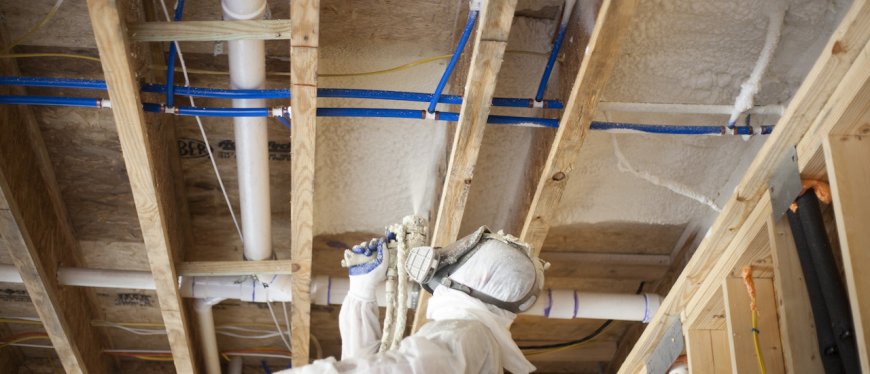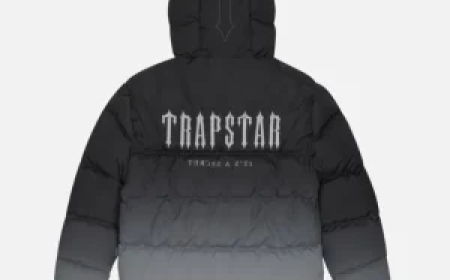Can crawl space Insulation Prevent Pipe Freezing?

Yes, properly installed crawl space insulation is highly effective at preventing pipe freezing. Insulating your crawl space creates a thermal barrier that maintains higher temperatures around plumbing systems during cold weather, significantly reducing the risk of frozen and burst pipes. While pipes typically begin freezing when exposed to temperatures below 20F for extended periods, proper crawl space insulation can maintain temperatures well above this threshold, even during severe cold snaps.
This article explores the relationship between crawl space insulation and pipe protection, comparing different insulation methods, and providing practical guidance for homeowners looking to safeguard their plumbing systems against winter damage.
How crawl space Insulation Protects Pipes
crawl spaces are particularly vulnerable to temperature fluctuations since they're often directly exposed to outdoor conditions through foundation vents. Without proper insulation, cold air can freely circulate around exposed pipes, rapidly cooling them to freezing temperatures.
The Science Behind Pipe Freezing
|
Factor |
Description |
Critical Threshold |
|
Temperature |
The point at which water freezes |
32F (0C) |
|
Exposure time |
Duration pipes are subjected to freezing temperatures |
3-5 hours typically required |
|
Pipe material |
Different materials conduct cold at different rates |
Metal pipes freeze faster than PVC |
|
Water pressure |
Higher pressure can accelerate freezing and bursting |
Normal pressure: 40-60 PSI |
|
Expansion rate |
Water expands by approximately 9% when frozen |
Pressure can reach 40,000+ PSI |
When water freezes inside pipes, it expands significantly, creating immense pressure that can cause pipes to crack or burst completely. The resulting water damage from a single burst pipe can cost thousands in repairs and remediation.
Bonus Tip: Contrary to popular belief, it's not the expanding ice that typically causes pipes to burstit's the increased water pressure between the ice blockage and the closed faucet that leads to failure at the pipe's weakest point.
Comparing crawl space Insulation Methods
Different insulation approaches offer varying levels of pipe protection based on their installation method, R-value, and overall effectiveness at maintaining stable temperatures.
Insulation Methods Comparison
|
Method |
R-Value Per Inch |
Installation Complexity |
Effectiveness for Pipe Protection |
Lifespan (years) |
|
Fiberglass batts |
2.9-3.8 |
Moderate |
Good |
20-30 |
|
Spray foam (closed cell) |
6.0-7.0 |
Professional only |
Excellent |
80+ |
|
Spray foam (open cell) |
3.5-3.7 |
Professional only |
Very good |
50+ |
|
Rigid foam boards |
4.0-6.5 |
Moderate |
Very good |
50+ |
|
Mineral wool |
3.0-3.3 |
Moderate |
Good |
30+ |
|
crawl space encapsulation |
N/A (system) |
Professional only |
Excellent |
15-20 |
Optimal Insulation Approaches for Pipe Protection
-
Insulating the crawl space Walls and Foundation
-
Creates a "conditioned" or semi-conditioned crawl space
-
Maintains consistent temperatures closer to your home's interior
-
Most effective for overall pipe protection
-
Typically requires closing crawl space vents during winter
Direct Pipe Insulation
-
Adds a thermal barrier directly to pipes
-
Can be used alone or in addition to crawl space insulation
-
Effective for targeting specific vulnerable pipes
-
Various materials available (foam sleeves, fiberglass wrap, heat tape)
crawl space Encapsulation
-
Comprehensive system that includes vapor barriers, sealing, and insulation
-
Creates a fully conditioned space
-
Maximum protection against both freezing and moisture issues
-
Higher initial investment but offers multiple benefits beyond pipe protection
Bonus Tip: For maximum effectiveness in severe climates, combine crawl space wall insulation with direct pipe insulation. This dual approach provides redundant protection against freezing temperatures.
Recommended R-Values for Effective Pipe Protection
The appropriate insulation R-value for your crawl space depends on your climate zone and the typical winter temperatures in your area.
Required R-Values by Climate Zone
|
Climate Zone |
Example Locations |
Minimum Recommended R-Value (crawl space Walls) |
Minimum Recommended R-Value (Pipes) |
|
Zone 1 |
Miami, Hawaii |
R-4 |
R-2 |
|
Zone 2 |
Houston, Phoenix |
R-8 |
R-2 |
|
Zone 3 |
Atlanta, Dallas |
R-10 |
R-3 |
|
Zone 4 |
Washington DC, Kansas City |
R-15 |
R-3 |
|
Zone 5 |
Chicago, Boston |
R-19 |
R-4 |
|
Zone 6 |
Minneapolis, Burlington |
R-20 |
R-6 |
|
Zone 7-8 |
Alaska, Northern Maine |
R-21 |
R-6 |
For direct pipe insulation, the U.S. Department of Energy recommends a minimum R-value of R-3 for hot water pipes, while cold water pipes in freezing-prone areas benefit from R-4 or higher insulation values to prevent freezing.
Insulation Material Performance for Pipe Protection
|
Insulation Material |
Thickness Needed for R-4 |
Moisture Resistance |
Ease of Installation |
Best Application |
|
Foam pipe sleeves |
5/8" - 3/4" |
Very good |
Very easy |
Direct pipe insulation |
|
Fiberglass pipe wrap |
1" - 1.5" |
Poor (needs vapor barrier) |
Easy |
Budget direct pipe insulation |
|
Rubber pipe insulation |
3/4" - 1" |
Excellent |
Easy |
Humid environments |
|
Heat tape + insulation |
N/A (active heating) |
Good |
Moderate |
Extremely cold environments |
Installation Best Practices
Proper installation services are crucial for effective pipe freeze prevention. Even high R-value insulation will underperform if improperly installed.
Key Installation Considerations
-
Seal air leaks first
-
Identify and seal all crawl space air penetrations before insulating
-
Check for gaps around pipes, electrical conduits, and foundation cracks
-
Use expanding foam or caulk to seal smaller openings
Ensure complete coverage
-
Avoid gaps between insulation sections
-
Pay special attention to corners and pipe penetrations
-
Use appropriate fasteners to secure insulation permanently
Address moisture concerns
-
Install vapor barriers on ground and foundation walls as needed
-
Ensure proper drainage away from foundation
-
Consider a dehumidifier for persistently damp crawl spaces
Special attention for pipe insulation
-
Insulate all water pipes, not just hot water lines
-
Cover entire pipe run without gaps
-
Secure with appropriate tape or fasteners
-
Add extra insulation at corners and junctions
Things to Consider Before Making a Decision
Before selecting your crawl space insulation strategy, evaluate these important factors:
-
Climate severity
-
Local winter temperature extremes
-
Duration of freezing periods
-
Wind exposure of your home
crawl space configuration
-
Accessibility for installation and maintenance
-
Height and working space available
-
Presence of mechanicals (HVAC, water heaters)
Moisture conditions
-
Current moisture levels in crawl space
-
History of flooding or water intrusion
-
Need for additional moisture control measures
Local building codes
-
Ventilation requirements
-
Insulation R-value minimums
-
Vapor barrier specifications
DIY vs. professional installation
-
Personal comfort with crawl space work
-
Complexity of chosen insulation method
-
Tools and protective equipment required
Common Questions
At what temperature do pipes typically freeze?
Water pipes typically begin freezing when exposed to temperatures of 20F (-6.7C) or below for several hours. However, other factors like pipe material, diameter, and exposure to air movement can cause freezing at higher temperatures. Pipes in uninsulated crawl spaces can freeze more quickly than those in partially heated areas.
Will closing crawl space vents in winter help prevent frozen pipes?
Yes, closing crawl space vents during winter months can significantly reduce the risk of pipe freezing by limiting the entry of cold air. This practice is recommended in most northern climates during winter, though some local building codes may have specific requirements about crawl space ventilation. Always check local regulations before permanently sealing vents.
Is pipe insulation alone enough to prevent freezing?
In moderately cold climates, properly installed pipe insulation may be sufficient to prevent freezing. However, in severe cold (below 10F for extended periods), pipe insulation alone may not provide adequate protection. For these conditions, combining pipe insulation with crawl space insulation or adding heat sources like heat tape offers more reliable protection.
How do I know if my crawl space needs additional insulation?
Monitor your crawl space temperature during cold weather. If it drops below 40F when outdoor temperatures are near freezing, additional insulation is likely needed. Other indicators include cold floors above the crawl space, higher-than-average energy bills, or any history of freezing pipes or moisture issues in the crawl space.
FAQ
Q: Does the type of pipe material affect freezing risk?
A: Yes, different pipe materials conduct cold at different rates. Copper pipes transfer heat quickly and can freeze faster than PVC or PEX pipes. However, all pipe types will freeze if exposed to temperatures below freezing for long enough, regardless of material.
Q: Can I install crawl space insulation myself or should I hire a professional?
A: Basic fiberglass batt or rigid foam insulation can be DIY-friendly for those comfortable working in confined spaces with appropriate safety gear. However, spray foam insulation and complete crawl space encapsulation systems typically require professional installation for proper performance and safety.
Q: Will insulating my crawl space affect my home's air quality?
A: Properly insulating your crawl space usually improves indoor air quality by reducing moisture levels and preventing the infiltration of soil gases and outdoor pollutants. However, poor installation or inappropriate materials can sometimes create air quality issues, particularly if moisture becomes trapped.
Q: How much can I expect to save on energy costs by insulating my crawl space?
A: Energy savings vary widely based on your climate, current insulation levels, and heating system. However, studies show that proper crawl space insulation typically reduces energy bills by 10-15% in homes with uninsulated crawl spaces, with the added benefit of preventing costly pipe freeze damage.
Q: Should I be concerned about pests when insulating my crawl space?
A: Yes, certain insulation materials can become nesting areas for pests. Rigid foam boards and spray foam are more resistant to pest intrusion than fiberglass batts. Always address any existing pest issues before installing insulation, and consider incorporating pest control measures into your crawl space improvement project.
Reviewer: Sophia White has 8 years of experience in spray foam insulation. She reviewed this post and gave clear guidance on aligning business messaging with what customers actually care about.































